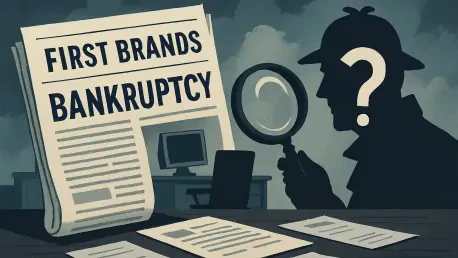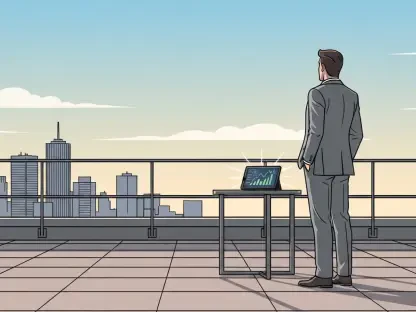What happens when a titan of the auto parts industry crumbles, leaving behind a staggering $11.6 billion in liabilities and a mysterious $2.3 billion gap in its accounts? The bankruptcy of First Brands has gripped the financial world, transforming a corporate downfall into a labyrinth of suspicion and intrigue. This isn’t merely a business failure; it’s a puzzle that challenges the very foundations of trust in credit markets, demanding answers from regulators, creditors, and the public alike.
The significance of this financial debacle cannot be overstated. With allegations of mismanagement and potential fraud swirling, the collapse of First Brands reverberates through major financial institutions, exposing vulnerabilities that could impact investors globally. The involvement of the U.S. Trustee, a federal watchdog under the Department of Justice, signals the gravity of the situation, as concerns mount over possible criminal conduct. This story matters because it tests the mechanisms of corporate accountability and transparency at a critical juncture.
The Shocking Scale of Financial Collapse
The numbers alone are staggering—First Brands filed for bankruptcy with liabilities towering at $11.6 billion, dwarfing any recoverable assets. Creditor Raistone has flagged a $2.3 billion shortfall in the company’s accounts, a void that raises immediate questions about where the money went. This isn’t just a clerical error; it’s a chasm that suggests deeper systemic issues within the company’s financial operations, shaking confidence among stakeholders who once saw the firm as a stable player in the auto parts sector.
Beyond the raw data, the ripple effects are palpable across the industry. Major banks and debt markets, already wary of instability, now face heightened scrutiny as they reassess exposure to similar risks. The U.S. Trustee’s suspicion of fraud or dishonesty at the executive level adds a layer of urgency, as the potential for widespread fallout looms large. This case has become a litmus test for how well the financial system can weather such a significant breach of trust.
Allegations and Irregularities Under the Spotlight
Drilling deeper into the financial quagmire, several red flags emerge that paint a troubling picture of First Brands’ operations. The use of third-party factoring arrangements—where invoices might have been sold multiple times or payments improperly withheld—points to operational chaos or deliberate deception. Such practices, if proven, could indicate a systemic breakdown or intentional misconduct, as highlighted by the U.S. Trustee’s filings in the ongoing bankruptcy proceedings.
Adding fuel to the fire, the sudden resignation of CEO Patrick James has intensified speculation about executive accountability. Was this a strategic exit to avoid scrutiny, or a sign of internal discord over the unfolding crisis? While no definitive evidence of wrongdoing has been confirmed, the timing of such a high-profile departure raises inevitable doubts. These compounding issues suggest that the mystery of the missing billions may be tied to decisions made at the highest levels of leadership.
The Push for an Independent Voice
Amid growing concerns, the call for an independent examiner has gained momentum as a critical step toward clarity. The U.S. Trustee argues that an internal investigation by First Brands’ special committee of independent directors lacks the impartiality needed, especially when insiders could be implicated. “Only an external examiner can deliver the unbiased truth and public accountability required in a case of this magnitude,” stated a legal analyst familiar with bankruptcy precedents like Celsius and FTX, where examiners uncovered critical insights.
Creditor Raistone has echoed this demand, emphasizing the need to trace the missing $2.3 billion with an objective lens. With U.S. Bankruptcy Judge Chris Lopez presiding over the case in Houston, the pressure is on for a swift decision, ideally by late October, though a hearing is scheduled for mid-November. The insistence on an independent probe reflects a broader consensus that self-policing in such a high-stakes scandal falls short of restoring confidence among affected parties.
Voices From the Trenches: Creditors and Experts Weigh In
Creditors, caught in the crosshairs of this financial storm, are vocal about their frustrations and fears. A representative from a major lending institution, speaking anonymously due to the sensitivity of the case, expressed dismay over the lack of transparency. “Billions don’t just vanish without a trace—someone must be held accountable, and an independent examiner is the only way to ensure that happens,” the source remarked, capturing the sentiment of many who stand to lose significant investments.
Legal experts also highlight the broader implications of this debacle for bankruptcy law and corporate governance. Drawing parallels to past cases, a seasoned attorney noted that examiners often uncover hidden patterns of fraud that internal reviews miss. “In situations like this, public reporting by an examiner doesn’t just resolve the case—it sets a standard for future oversight,” the attorney explained. These perspectives underscore the urgency of moving beyond internal narratives to a more credible investigation.
Charting the Road to Accountability
Restoring trust after such a monumental collapse requires deliberate and transparent action. The first priority for Judge Lopez should be the immediate appointment of an independent examiner to dissect the $2.3 billion discrepancy and scrutinize the questionable factoring practices. This move, rooted in successful precedents from other high-profile bankruptcies, would signal a commitment to fairness and thoroughness in addressing the crisis.
Equally important is ensuring that the examiner’s findings are accessible to the public, fostering an environment of openness rather than secrecy. Stakeholders, including creditors and investors, should also advocate for periodic updates during the investigation to maintain momentum and confidence in the process. These measures, if implemented effectively, could serve as a blueprint for handling similar corporate failures, reinforcing the integrity of financial systems under strain.
As the dust settles on the initial shock of First Brands’ bankruptcy, the unresolved questions linger heavily over the financial landscape. The push for an independent examiner has set a precedent for how such crises can be tackled with impartiality. Looking back, the insistence on transparency became a rallying cry for creditors and regulators alike. Moving forward, the lessons learned demand stronger oversight mechanisms and stricter compliance standards to prevent such mysteries from recurring. The path ahead requires not just answers about the missing billions, but a renewed commitment to safeguarding trust in corporate dealings for years to come, ensuring that accountability remains at the forefront of industry reforms.









